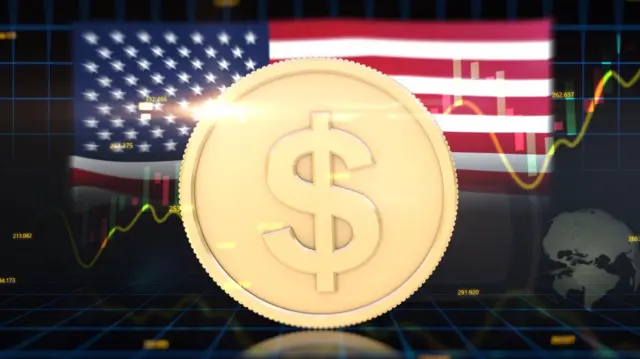Monetary policy profoundly affects everyday life, influencing everything from mortgage rates to the cost of credit card debt. For millions of Americans, understanding how these policies shape credit card interest rates can offer valuable insight into managing debt effectively. The Federal Reserve, commonly known as the Fed, plays a central role in shaping economic conditions, especially through its policy decisions on interest rates.
These decisions trickle down into various sectors, affecting personal finances in powerful ways. When the Fed adjusts its policies in response to economic indicators, one of the immediate consequences is a shift in credit card interest rates. This article explores the connection between monetary policy and credit card interest rates in the U.S., discussing how Fed decisions impact consumer debt and the strategies cardholders can adopt to mitigate high interest costs.
The fed’s influence on credit card interest rates

Monetary policy in the U.S. is primarily guided by the Federal Reserve, which has the dual mandate of maintaining low unemployment and controlling inflation. The Fed uses various tools to influence the economy, with interest rate adjustments as one of its most powerful levers. When the economy shows signs of overheating, characterized by high inflation, the Fed raises interest rates to slow spending and borrowing. Conversely, during economic slowdowns, it lowers rates to stimulate spending and investment.
Credit card interest rates are closely tied to the Fed’s target rate, also known as the federal funds rate. When the Fed raises its target rate, credit card interest rates tend to follow suit, as financial institutions pass on the higher borrowing costs to consumers. Credit card issuers often set their rates based on the prime rate, which banks typically set a few points above the federal funds rate. Therefore, changes in the federal funds rate directly influence the prime rate and, consequently, the cost of borrowing on credit cards.
The effect of rate hikes on revolving credit
When the Fed raises interest rates, the cost of carrying credit card debt increases, impacting individuals with outstanding balances. Credit cards generally have variable interest rates, meaning they fluctuate with the prime rate, which in turn follows the Fed’s rate adjustments. Therefore, each rate hike directly impacts consumers’ monthly credit card payments. For individuals with significant credit card balances, this can lead to a noticeable increase in interest costs, sometimes stretching their financial limits.
An increase in credit card interest rates also amplifies the minimum payments required. When interest rates go up, more of each payment is allocated toward covering interest charges rather than reducing the principal balance. This effect can prolong debt repayment timelines, keeping consumers in debt longer and increasing the total interest paid over time. Understanding how these rate hikes work is essential for consumers looking to manage or reduce their credit card debt effectively.
Monetary policy impacts on different types of credit card users
- Revolvers: These are cardholders who carry a balance from month to month. Revolvers are most affected by rate hikes, as they incur interest on outstanding balances. For these consumers, an increase in interest rates means a higher cost of credit, making it more challenging to pay down debt. Higher rates can lead to increased monthly payments and longer debt repayment periods, leading to substantial financial stress if not managed carefully.
- Transactors: Unlike revolvers, transactors pay off their credit card balances in full each month, avoiding interest charges. Although rate hikes affect interest rates, transactors are less impacted by monetary policy changes, as they don’t rely on revolving credit. For them, maintaining this habit can be a strategic way to avoid the financial strain associated with rising interest rates.
- Credit Builders: Individuals using credit cards to build or rebuild credit may be in the early stages of their credit journey and more vulnerable to changes in interest rates. If they carry a balance, even a modest increase in interest rates can lead to higher costs. It’s essential for credit builders to be aware of these effects and strive to minimize outstanding balances whenever possible.
Understanding how monetary policy affects these user types can help consumers choose the right credit card strategy and avoid high-interest debt, particularly when rates are rising. By selecting cards with lower variable rates or transferring balances to 0% APR promotional offers, users can better manage their borrowing costs. Additionally, staying informed about rate trends enables proactive financial planning, ensuring that consumers are prepared for potential increases in monthly payments.
Strategies for managing credit card debt in a high-rate environment
As the Fed continues to adjust interest rates in response to economic conditions, credit cardholders can take several proactive steps to manage debt effectively. One of the most effective strategies is to pay down existing balances as quickly as possible, reducing exposure to high-interest costs. By focusing on paying more than the minimum payment, consumers can reduce the principal balance faster and lower the interest accrued over time.
Another approach is to minimize reliance on credit cards for everyday expenses, especially when rates are high. Budgeting carefully and relying more on cash or debit for routine purchases can help keep balances low. For those with good credit scores, exploring balance transfer options with 0% introductory interest rates for a limited period can be a valuable tool for paying down debt without accruing additional interest. However, consumers should be cautious of balance transfer fees, which can add to costs.
The Federal Reserve’s monetary policy has a profound influence on credit card interest rates, impacting millions of American consumers. As the Fed raises or lowers rates in response to economic conditions, the costs associated with credit card debt fluctuate accordingly. For cardholders, understanding these dynamics is essential, especially for those carrying balances on variable-rate accounts.
By staying informed about monetary policy and implementing strategic debt management practices, consumers can mitigate the impact of rising interest rates and maintain greater control over their financial well-being. In a high-interest environment, proactive steps like paying down balances, consolidating debt, and avoiding new debt can make a significant difference. Ultimately, awareness and preparation are key to managing the effects of monetary policy on personal finances in the U.S.





